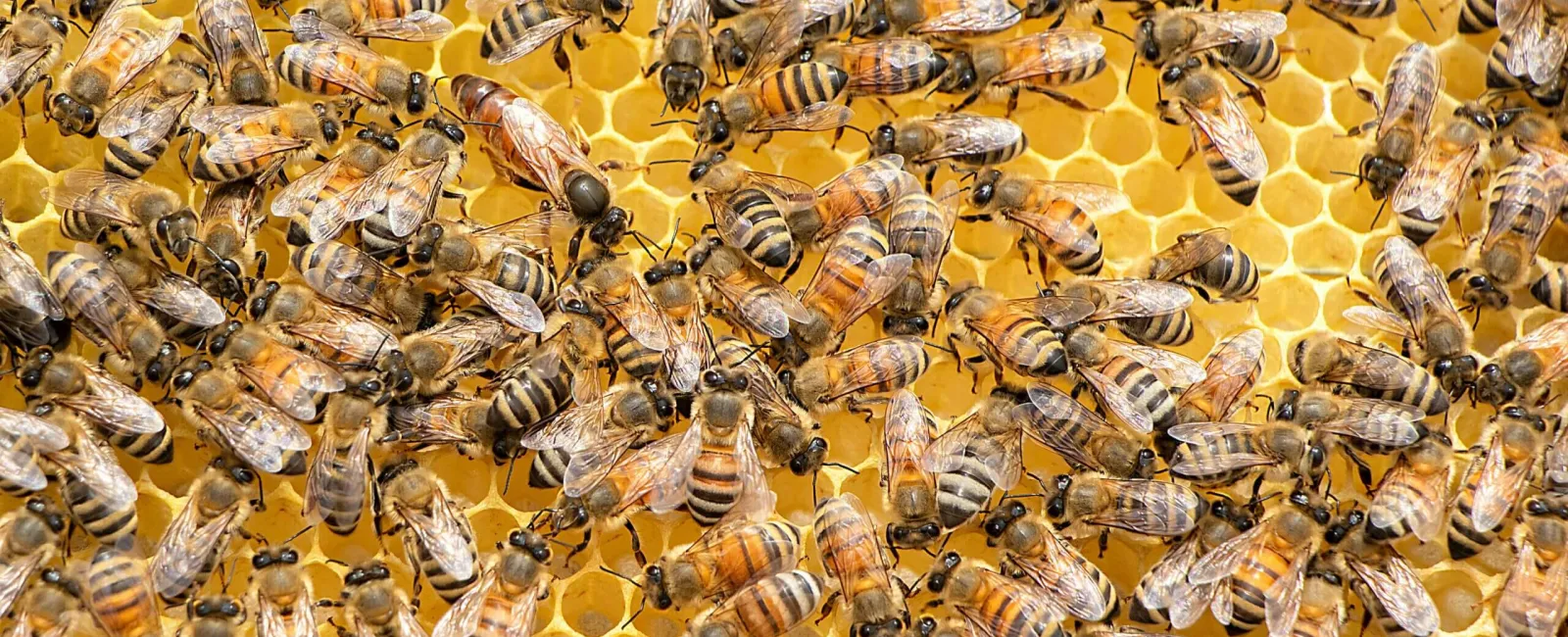Although late summer early fall is not the peak season for bees it is important to be aware if you have a possible hive around your home because this is the time bees are looking for a warm location and enough food supply to survive the winter months. That warm location could very well be your home. However, before taking any action against a beehive, there are a few factors that need to be determined.
Check to Make Sure It Is Not a Wasp Nest
First, you need to determine the type of bee in which is living in the hive, this is important because it is easy to confuse a bee with a wasp. This can be done in a few simple steps. The distinct difference in the appearance of the hive/nest is a great way to determine the type of insect living inside. To see signs of it possibly being a hornet nest, read our article How to Locate & Get Rid of Hornets Nests
Why Should You Worry About Removing Honey Bee Nests?
Places to check when you are looking for a honeybee hive are attics, ceiling, walls, trees, chimneys and any other dark places around your home. Each hive can contain between 20-80 pounds of honey, the weight of the hive alone has the potential to do structural damage to your home. As the hive expands and honey begins to leak it will cause damaging stains as it seeps through your walls.
How to Remove Honey Bee Nests
If you happen to spot a bee sitting near you take a good look at the characteristics of the insect. If it is hairy if it has thick legs and a round body, you have honeybees. Although honeybees still pose a risk to being stung it is important to remember that once a honeybee stings you it will die, so they do not sting unless provoked. Give them space and stay clear from the hive until you are prepared for removal.
Removing the hive as soon as you locate it is the best option. To ensure your safety, please follow a few steps.
- Wear the necessary protective gear such as long sleeves, long pants, closed toed shoes.
- Also, make it an important step to cover your face with some form of cloth or netting.
Tip: make sure you do not smell fruity. Wearing body spray or lotion that smells fruity will attract the bees to you.
Steps to Remove Beehives
- Spray the hive with insecticide during dawn or dusk. During these times of day, the population of bees is at its highest giving you a better chance of killing more of them. Spraying a couple of days in a row may also be beneficial depending on the size of the hive.
- Scrape the hive off the surface it is attached to carefully into a large garbage bag, pour more insecticide in the bag and tie if off quickly, followed by throwing it in the garbage.
- If the hive was a honeybee hive located in your home, it is important to thoroughly clean the area with a strong detergent to try to rid the area of the honey. It is also important to try to determine how the bees got in your home and take the necessary steps to seal the holes, cracks or other means they could have used to find their way into your home.
Greenix Pest Control offers comprehensive pest control and free quotes to potential customers. We truly care about our customers and use a proactive four season approach to make sure that you property is safe and pest free all year round.
If this task seems too risky or too daunting call Greenix at (888) 800-7181 and have a professional rid your home of beehives.

